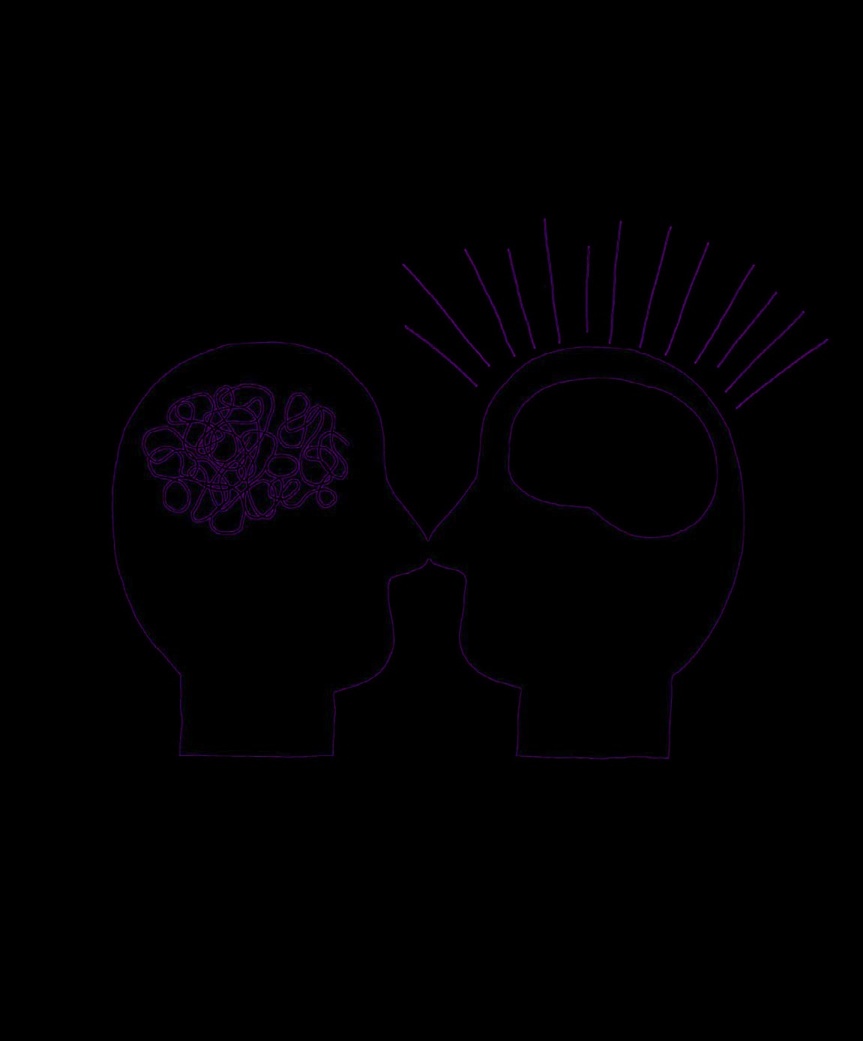The Psychology Book (100 page)
Read The Psychology Book Online
Authors: Unknown

THERE IS AN
ASSOCIATION BETWEEN
INSANITY
AN
HANS J. D G
EYSENCK ( E
1916 N
–199 I
7) US


318 HANS J. EYSENCK
IN CONTEXT
D
iscussion about genius has
been dominated for most
of its history by the nature-
APPROACH
versus-nurture debate: is a genius
Personality
born or made? Prior to the early
BEFORE
1900s, ideas about genius were
There is a common
1926
American psychologist
based largely on stories of people
genetic basis for great
Catharine Cox tests the
who were perceived as geniuses,
potential in creativity and
intelligence and personalities
such as Leonardo da Vinci and
for psychological deviation.
of 300 geniuses and finds the
Beethoven. As early as Aristotle,
Hans J. Eysenck
average IQ to be 165+; key
creative genius and madness were
characteristics are tremendous
seen as linked, and both assumed to
be largely genetic in nature. In 1904,
persistence and motivation.
British psychologist Havelock Ellis’s
1956
J.P. Guilford develops the
A Study of British Genius,
reported
concept of divergent thinking
controlled studies of both psychotic
to discuss creativity.
patients and creative people to
establish a link between the two.
than the detailed characteristics
AFTER
Seventy years later the German
that make up a whole person. He
2009
In
Genius 101: Creators,
psychologist Hans Eysenck reviewed
was a biologist, and like others
Leaders, and Prodigies
,
the early evidence and concluded
before him, notably the ancient
American psychologist Dean
that it is not psychosis (full blown
Greek physicians Hippocrates and
Keith Simonton argues that
insanity) that is related to genius,
Galen, he believed that physiological
geniuses are the result of good
but psychoticism, which he defined
factors account for temperament.
genes and good surroundings.
as an underlying disposition to
Hippocrates had suggested that
develop psychotic symptoms.
personality type arises from an
2009
Swedish psychologist
excess or deficit of a particular type
Anders Ericsson attributes
Temperament and biology
of bodily fluids, known as humors.
expert performance to 10,000
Many psychologists have defined
Galen expanded upon this idea to
hours of practice.
and measured personality traits,
suggest there are four types of
but Eysenck’s interests focused
temperament: sanguine, choleric,
on human temperament rather
phlegmatic, and melancholic.
…and combined with
…this can lead
an
IQ of 165
or above…
to genius.
A capacity for
over-inclusive thinking
can lead to original and
creative ideas…
…but combined with
…this can lead
psychotic symptoms
…
to insanity.

PSYCHOLOGY OF DIFFERENCE 319
See also:
Galen 18–19 ■ Francis Galton 28–29 ■ J.P. Guilford 304–05 ■ Gordon Allport 306–13 ■
Raymond Cattell 314–15 ■ Walter Mischel 326–27 ■ David Rosenhan 328–29
He claimed that sanguine people
Eysenck’s model of personality
provides an overarching
have an excess of blood, and are
paradigm for defining temperament. Each of the superfactors
cheerful and optimistic. Those with
(Extraversion and Neuroticism) is made up of lower-order
habits, such as “lively.” The two superfactors divide habits
a choleric temperament, stemming
into four types that reflect Galen’s four temperaments.
from an abundance of bile, are
quick and hot-tempered. Phlegmatic
individuals, with too much phlegm,
neuroticism
are slow, lazy, and dull. Melancholics,
who suffer from black bile, are sad,
pessimistic, and depressed.
moody
touchy
Galen’s biological approach
c
anxious
restless
h
cholic
o
appealed to Eysenck, who considered
n
le
la
rigid
aggressive
r
temperament to be physiological
e
ic
m
and genetically determined.
sober
excitable
He proposed a measure of two
pessimistic
changeable
dimensions, or overarching
reserved
impulsive
e
“superfactors” of personality, that
n
x
unsociable
optimistic
tr
encompass all the detailed traits:
o
a
Neuroticism and Extraversion–
rsi
quiet
active
v
Introversion, which he then mapped
e
e
v
rsi
against Galen’s four temperaments.
passive
sociable
tro
o
careful
outgoing
n
Eysenck’s scales
in
thoughtful
talkative
“Neuroticism” was Eysenck’s name
for a personality dimension that
peaceful
responsive
ph
ranges from emotionally calm and
le
controlled
easy-going
stable at one extreme, to nervous
g
e
m
reliable
lively
in
and easily upset at the other. He
a
u
t
g
ic
claimed that neurotics (at the less
even-tempered
carefree
san
stable end of the spectrum) have a
calm
cheery
low activation threshold in terms of
triggering the sympathetic nervous
system, which is the part of the
emotional stability
brain that activates the “fight or
flight” response. People with
this more responsive system are
be more likely to develop a variety
under-aroused and bored; so the
hyperactive in this regard, so they
of nervous disorders. Eysenck’s
brain must either wake itself up
respond to even minor threats as
second dimension of temperament
through seeking further excitement
though they are seriously dangerous,
was “Extraversion–Introversion.” He
with other people (extraverts) or
experiencing an increase in blood
used these terms very much as we
calm itself down through seeking
pressure and heart rate, sweating,
use them to describe people around
peace and solitude (introverts).
and so on. They are also more likely
us: extraverts are outgoing and
to suffer from the various neurotic
talkative, while introverts are shy
Psychoticism
disorders. However, Eysenck was
and quiet. Eysenck claimed that
Eysenck tested his ideas on large
not suggesting that people who
variations in brain activity explain
groups of people, but realized there
scored at the nervous end of this
the difference: introverts are
were some sections of society that
dimension are necessarily neurotic
chronically over-aroused and jittery,
he was missing; so he took his
in practice, merely that they would
while extraverts are chronically
studies into mental institutions. ❯❯

320 HANS J. EYSENCK
said that, as with the neuroticism
involves originality and novelty,
dimension, psychoticism ranges
and is based on aspects of both
along a scale; his tests looked for
intellectual ability and personality.
the occurrence of personality traits
In his paper,
Creativity and
commonly found among psychotics.
Personality: Suggestions for
Eysenck found that a number of
a Theory
, Eysenck aimed to throw
Introverts are characterized
personality traits relate to each other
some light on the nature of creativity
by higher levels of activity
to produce psychoticism; those who
and its relationship to intelligence,
than extraverts and so are
score highly on this scale are usually
personality, and genius.
chronically more cortically
aggressive, egocentric, impersonal,
Genius is held to be the highest
aroused than extraverts.
impulsive, antisocial, unempathic,
form of creativity, and it rests upon
Hans J. Eysenck
creative, and tough-minded. A high
very high intelligence: an IQ score
score on the scale does not mean a
of at least 165 is considered to be a
person is psychotic, and it is not
prerequisite. However, a high IQ is
inevitable that they will become so;
not enough on its own. Another
they simply share characteristics
relevant component of intelligence